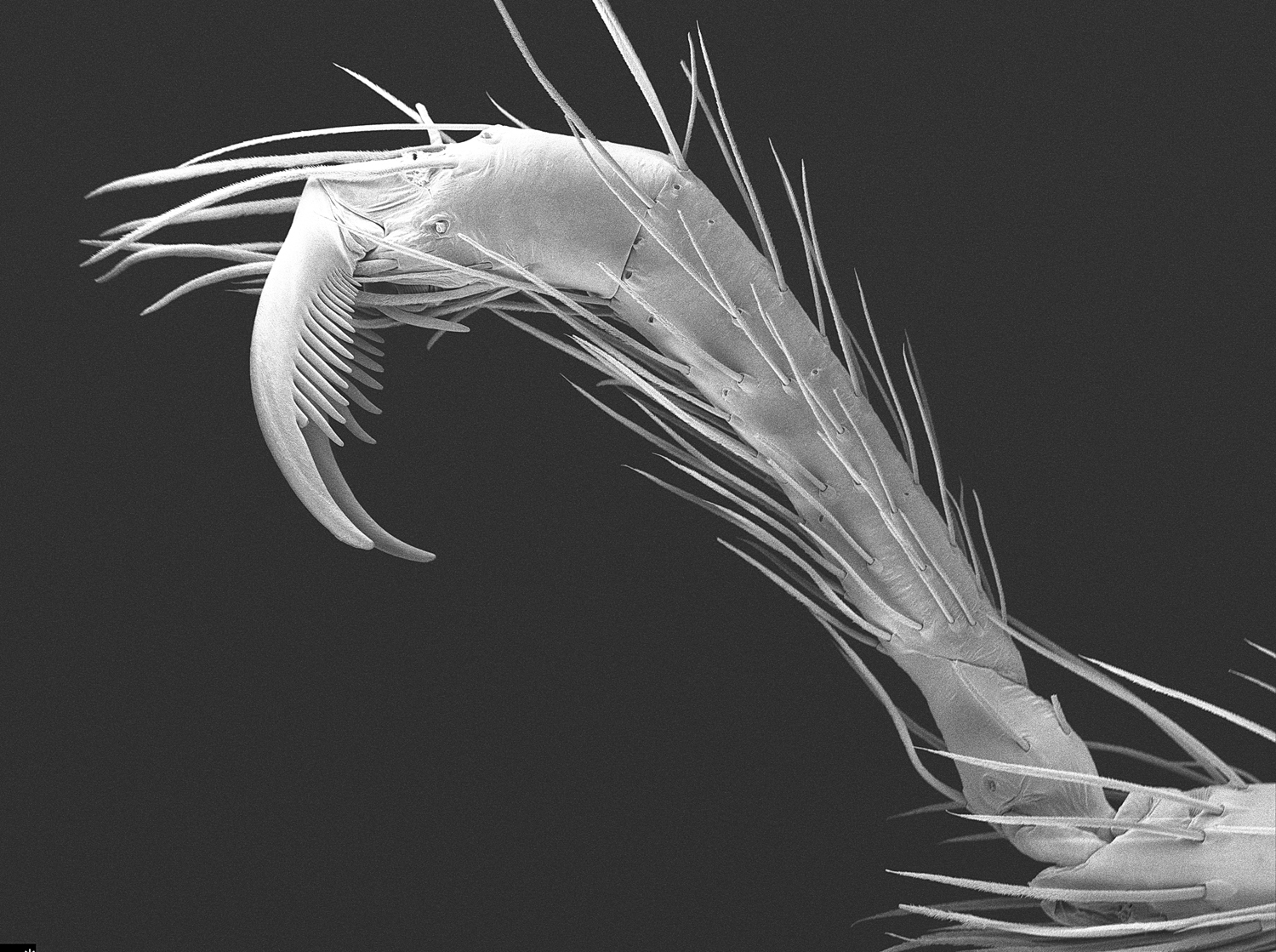Rare Discovery: Hook-Legged Spider Found in Oregon Cave


A group of cave explorers and scientists have made a rare discovery: an entirely new taxonomic family of spider in the caves of southern Oregon.
Only two other spider families (the taxonomic group above both genus and species) have been found since 1990, and this is the first newly discovered, native one uncovered in North America since 1890, said California Academy of Sciences researcher Charles Griswold, lead author of the study that described the species.
So far, the family consists only of the one species described, which the researchers named Trogloraptor marchingtoni. The species is named after Neil Marchington, a member of the Western Cave Conservancy, who first discovered the spider. The genus name, Trogloraptor, means "cave robber."
It's an apt name for a spider with unique hooks, or claws, on its legs, which the researchers believe are used to snatch flying insects, like midges, out of the air. With its legs outstretched, the spider measures up to 3 inches (8 centimeters) long.
"They're biggish," Griswold said. "But when you're in a cave and it's dark and there's only the beam of your head lamp, they look much bigger. It's quite astonishing to see them hanging from a few threads." [Gallery: Spooky Spiders]
Griswold and his colleagues think that the newly discovered spiders hang from the underside of caves on simple webs, waiting to snatch a meal with their astonishing sicklelike legs. The few specimens Griswold and his graduate student Tracy Audisio have reared in the lab, though, haven't eaten anything. "It seems very shy," Griswold told OurAmazingPlanet.
The spider also has poisonous glands, although there's no evidence that it is dangerous to humans.
Get the world’s most fascinating discoveries delivered straight to your inbox.
Griswold said this discovery could help explain why there are legends about giant spiders living in caves in this region. And perhaps there are other similar species yet to be found; many caves, especially in the western United States, remain little studied.
Finding a new family like this is an historic moment for the field. "It is just as fascinating to arachnologists as the discovery of a new dinosaur is to paleontologists," said spider expert Norman Platnick at the American Museum of Natural History. Platnick was not involved in the discovery or description of the new species.
Another unusual thing about the spider is that it has two rows of teeth, or serrula. "I don't recall seeing any other spiders with that kind of serrula," Platnick told OurAmazingPlanet.
Currently, there are only 111 recognized spider families. New families get added in one of two ways. The more common way is by studying a group that has already been described, and discovering that its relationships are not what had been previously thought, Platnick said. Less common is a case like Trogloraptor, where a new family is established when the animal is first described, he said.
The spider was first found by citizen scientists from the Western Cave Conservancy and taken to Audisio, who showed it to Griswold. At first, they thought it was a brown recluse, a poisonous type of spider. But closer examination revealed it was unique, and they spent two years determining that it is a new family. Their results are published today (Aug. 17) in the journal ZooKeys.
Reach Douglas Main at dmain@techmedianetwork.com. Follow him on Twitter @Douglas_Main. Follow OurAmazingPlanet on Twitter @OAPlanet. We're also on Facebook and Google+.




